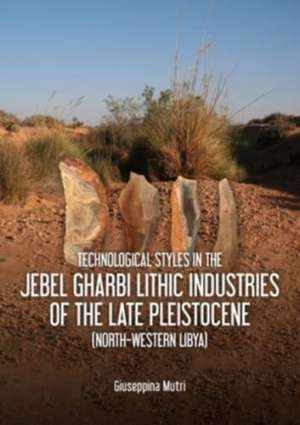Technological Styles in the Jebel Gharbi Lithic Industries of the Late Pleistocene (North-Western Libya)
Autor Giuseppina Mutrien Limba Engleză Paperback – 14 sep 2022
| Toate formatele și edițiile | Preț | Express |
|---|---|---|
| Paperback (1) | 252.22 lei 38-44 zile | |
| Sidestone Press Dissertations – 14 sep 2022 | 252.22 lei 38-44 zile | |
| Hardback (1) | 497.69 lei 38-44 zile | |
| Sidestone Press Dissertations – 14 sep 2022 | 497.69 lei 38-44 zile |
Preț: 252.22 lei
Nou
Puncte Express: 378
Preț estimativ în valută:
48.28€ • 52.46$ • 40.58£
48.28€ • 52.46$ • 40.58£
Carte tipărită la comandă
Livrare economică 17-23 aprilie
Preluare comenzi: 021 569.72.76
Specificații
ISBN-13: 9789464280272
ISBN-10: 9464280271
Pagini: 196
Ilustrații: 90bw/5fc
Dimensiuni: 182 x 257 x 13 mm
Greutate: 0 kg
Editura: Sidestone Press Dissertations
ISBN-10: 9464280271
Pagini: 196
Ilustrații: 90bw/5fc
Dimensiuni: 182 x 257 x 13 mm
Greutate: 0 kg
Editura: Sidestone Press Dissertations
Notă biografică
Giuseppina Mutri is currently Post Doc Fellow at the Cyprus Institute, where she is in charge of the study of dental calculus from different periods. Her previous research background is focused on lithic technology and use-wear. Her experience on North African Prehistory began with her graduate dissertation on the lithic technology of the Upper Later Stone Age of Jebel Gharbi (Libya), where she also conducted extensive surveys for her PhD, working on the sourcing and characterization of lithic raw material for the same period.
